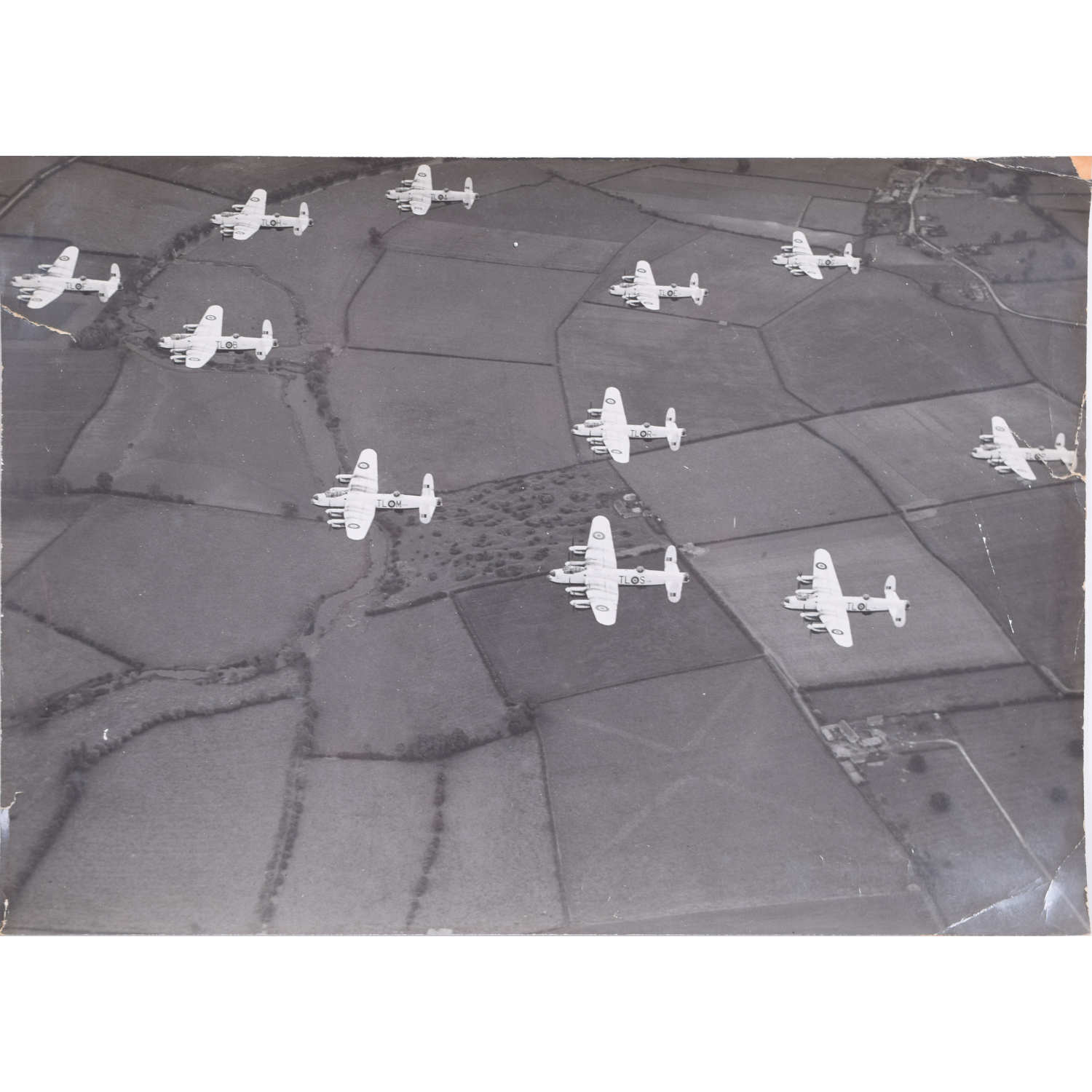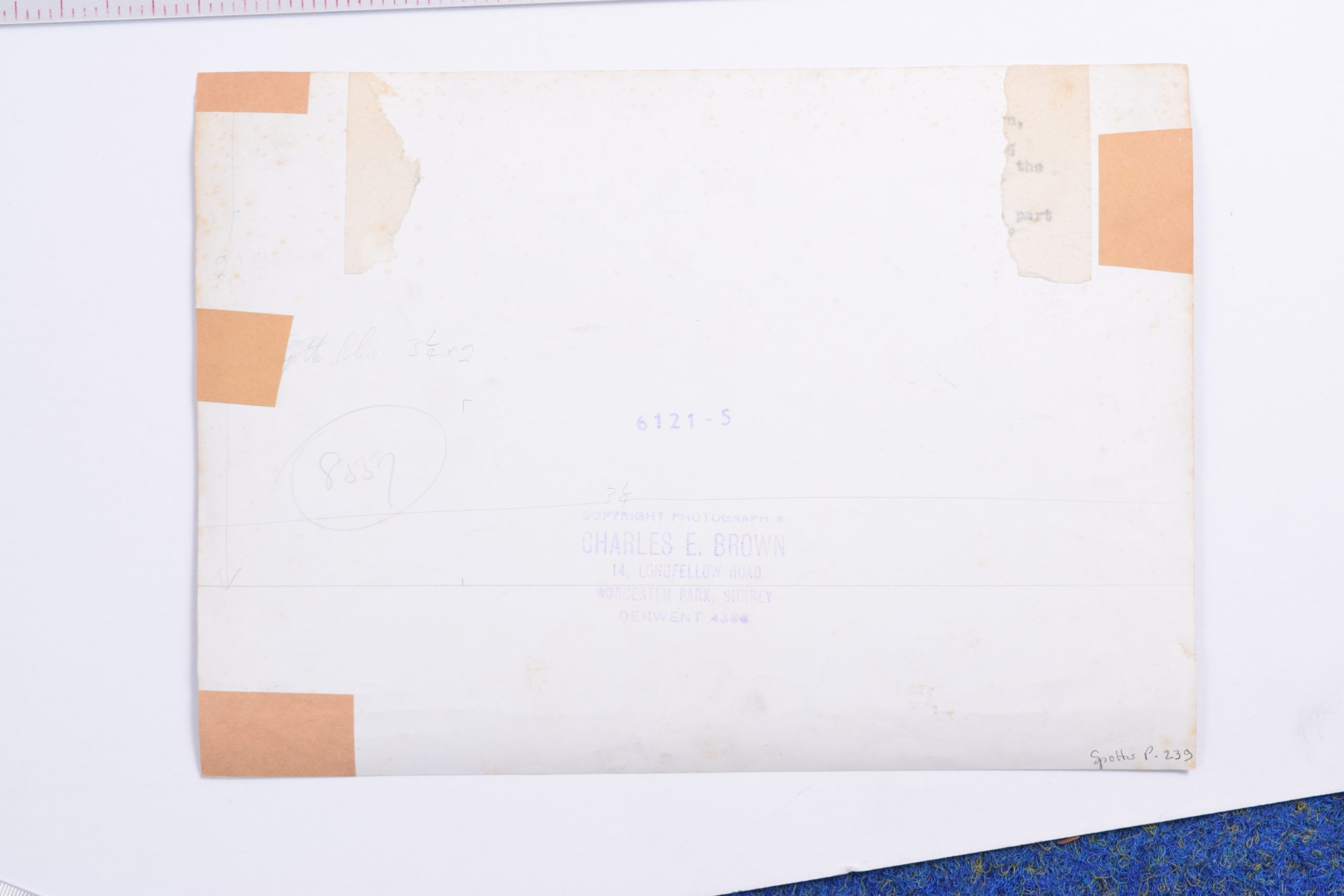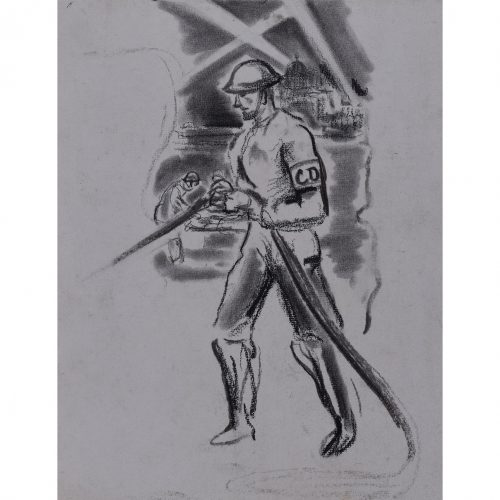Charles E Brown (1896-1982)
AVRO Lancasters of 35 Sqdn in Flight
Original Silver Gelatin photograph, 1940s
19 x 27 cm
Formed in 1916, the Squadron spent 1917 and 1918 in France flying the FK8. In support of the Spring Offensive of March 1918, it dropped 118 25lb bombs – which would have made up one third of the bombing load of a Lancaster.
In 1940 the Squadron was reformed as the first Halifax squadron, pilots including Leonard Cheshire and James Brian Tait – both subsequently of 617 ‘Dambusters’ Squadron. In 1944 the Squadron converted to the Lancasters to be seen in this photograph. Sqd Ldr Alec Panton Cranswick DFC DSO was shot down in 1944 on his 107th bombing mission – a record for any British airman.
Following the War, the Squadron engaged in both the Victory flypast over London and a goodwill tour of the United States. Subsequently disbanded and reformed several times, it operated the Boeing Washington, the Canberra, and for twenty years the Vulcan.
Charles E Brown was a famous photographer of aircraft whose father was a butcher in Wimbledon, London. Young Charles was given a camera for his 14th birthday and in 1911 photographed an Edwardian gentleman in trouble landing his balloon in neighbouring Southfields. This photograph was published in the Daily Mirror – the fee being half a crown – and Brown was encouraged to join the Daily Mirror’s photography department upon leaving school at 16.
Towards the end of the First World War he served with the Royal Air Force at their official London Photographic Centre. Following the war, he took to photographing trains, and captured a famous photograph of a Southern Railway locomotive that was used for the following ten years in railway posters. The income from this allowed him to pursue his passion of aviation photography in the 1920s and 1930s, from which commissions from the Air Ministry and Fleet Air Arm followed. During the war his work included commissions for Aeronautics magazine.
Provenance: from the collection of Philip J R Moyes, author of many books on the RAF, most notably The Pictorial History which ran to several volumes.
Condition: Marginal creases, losses, short tear to left edge, very short tear to right edge, generally good,













